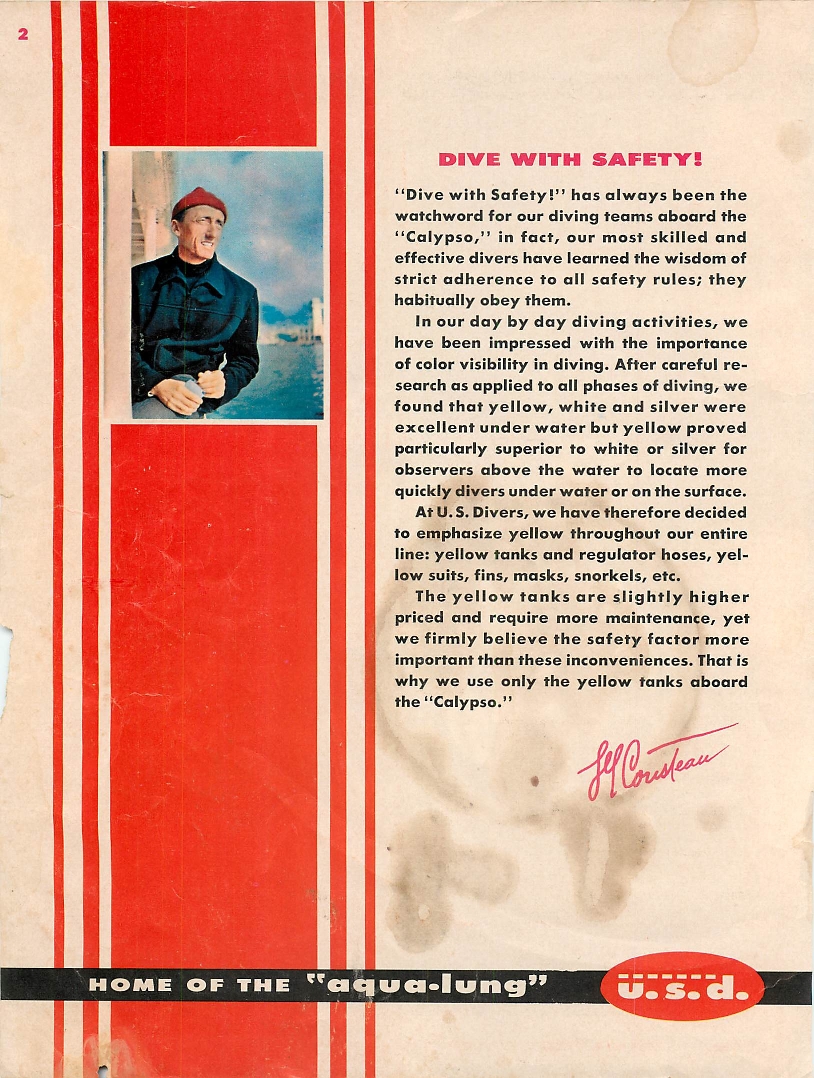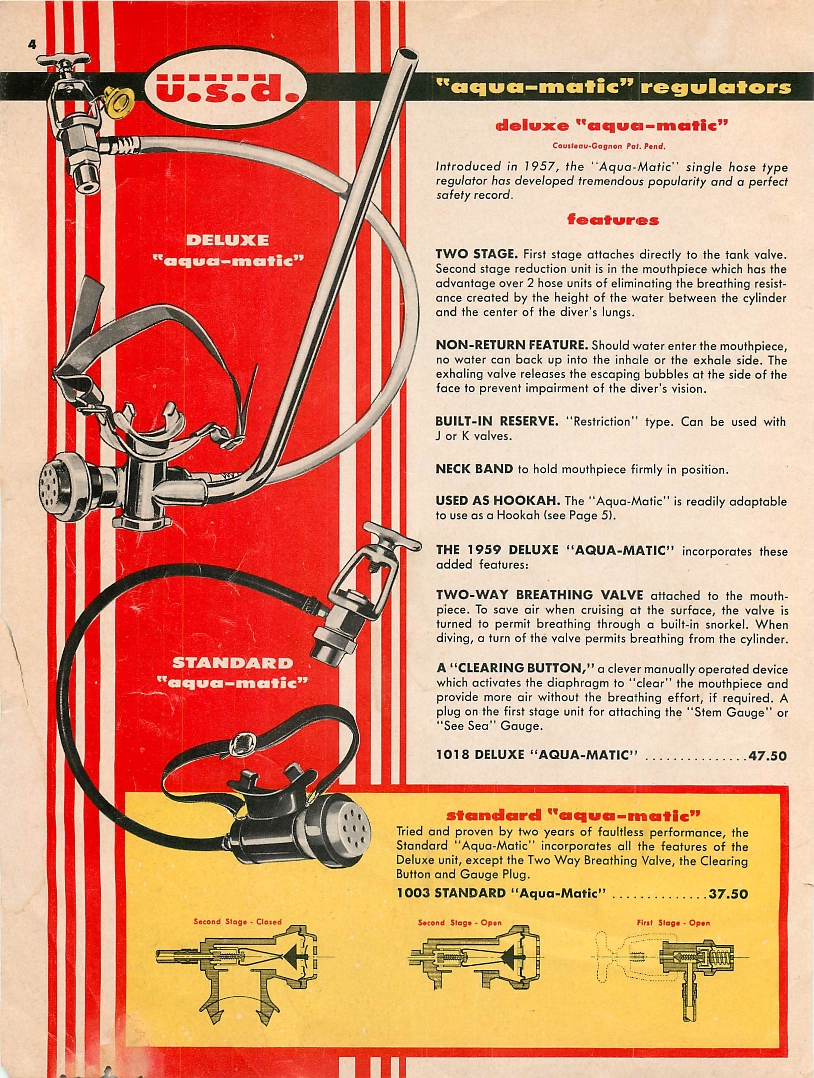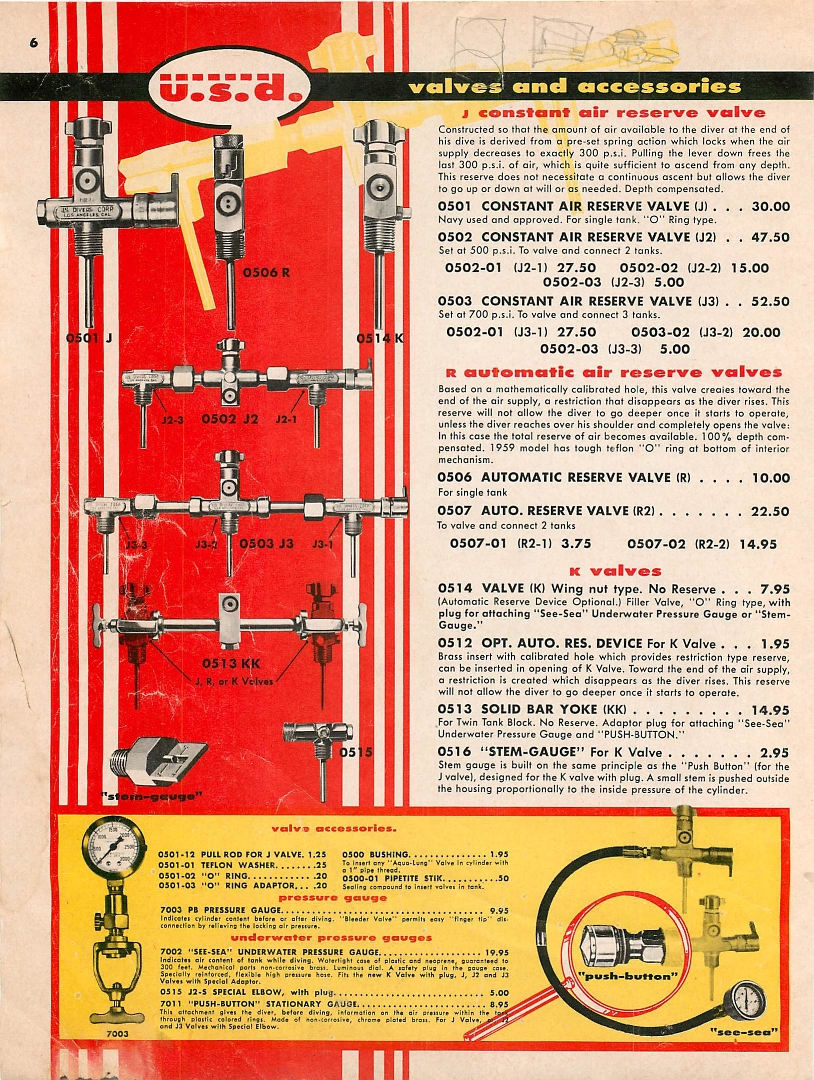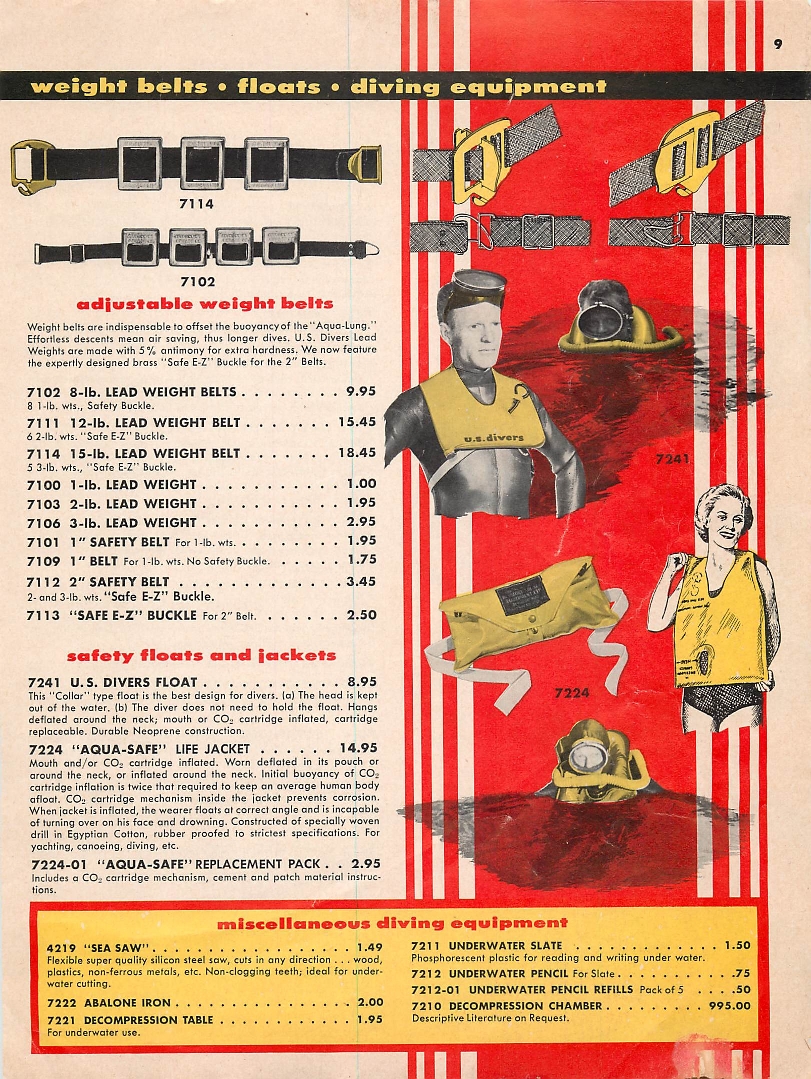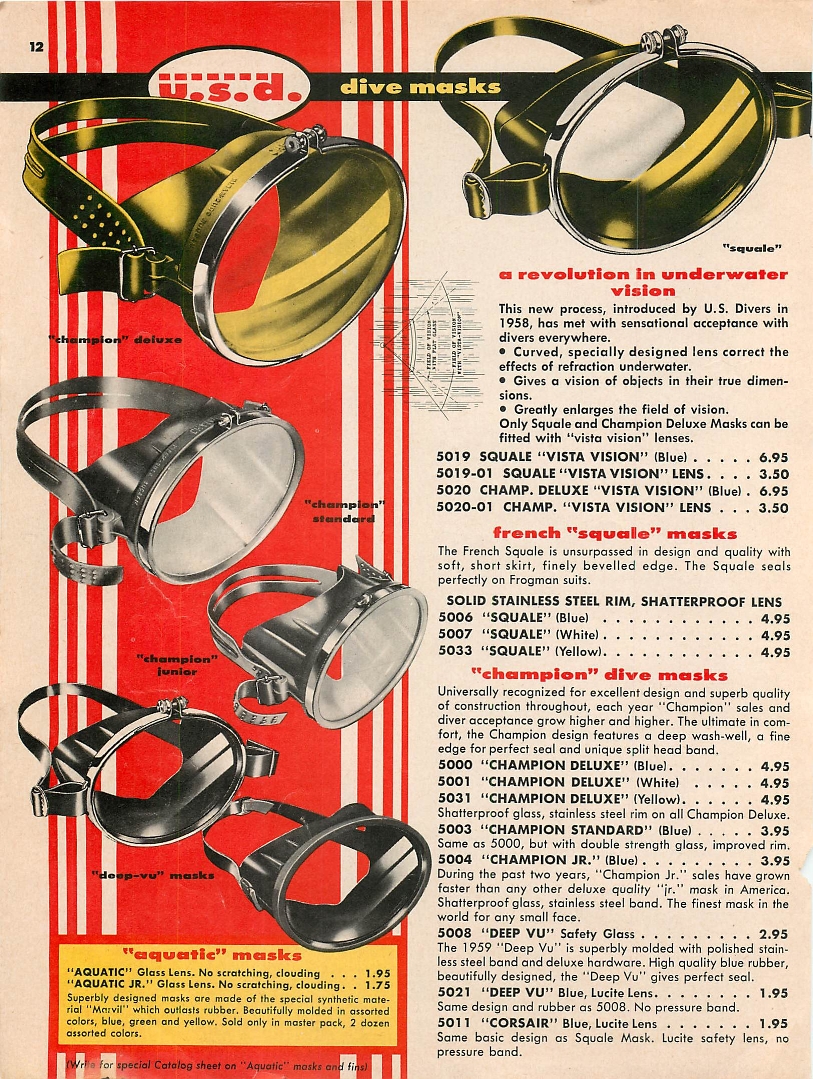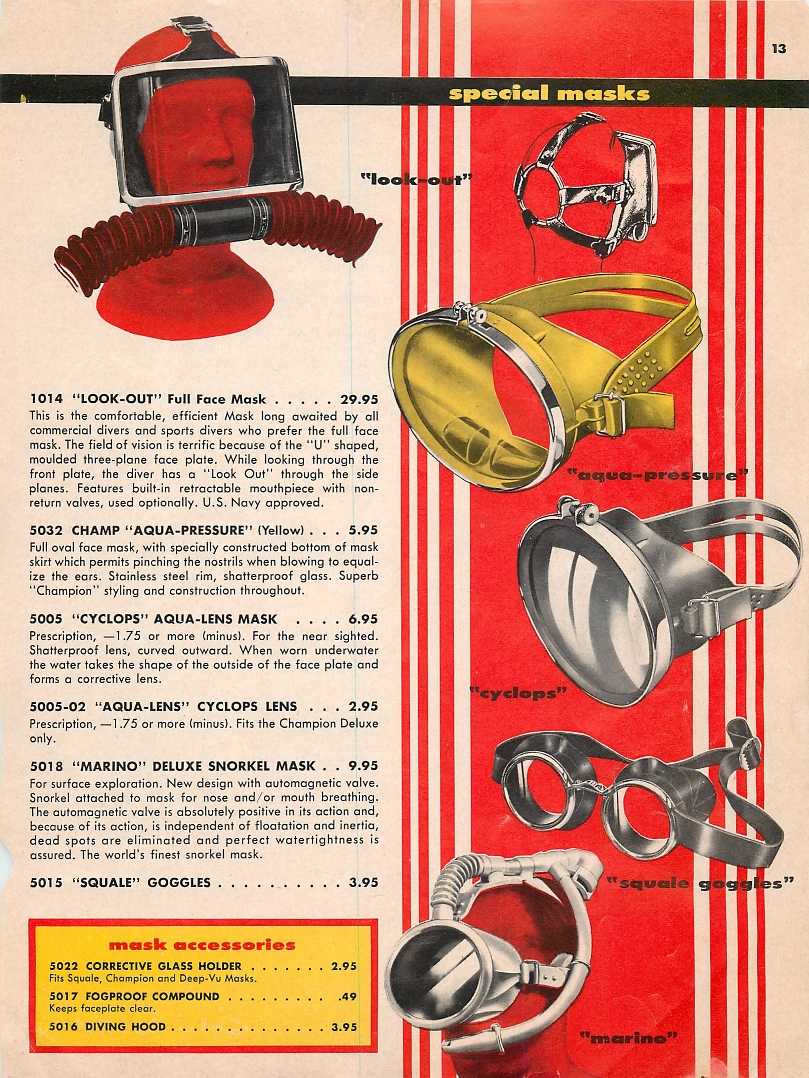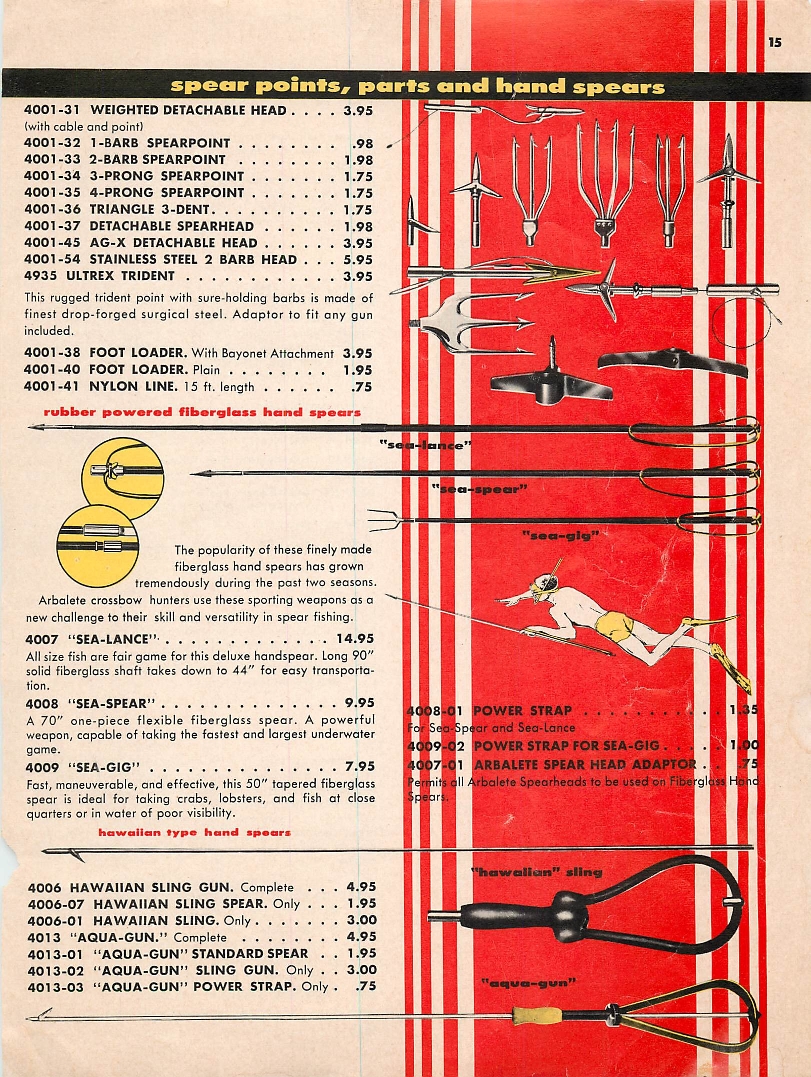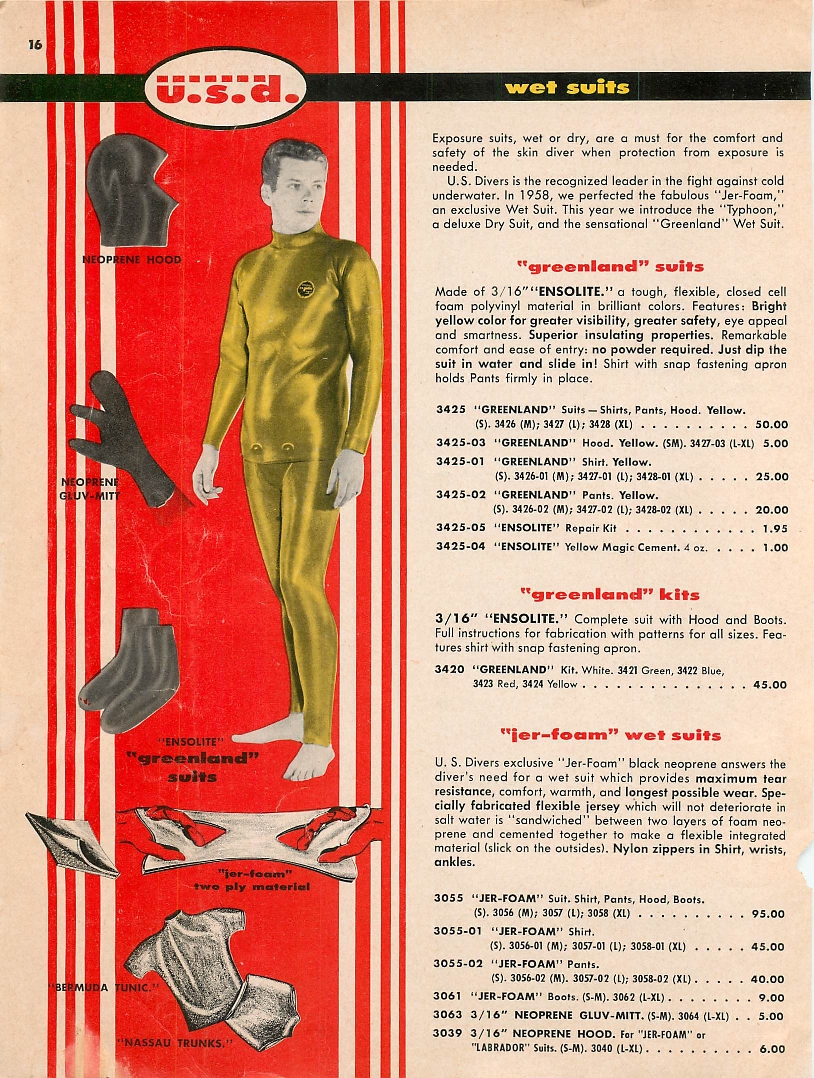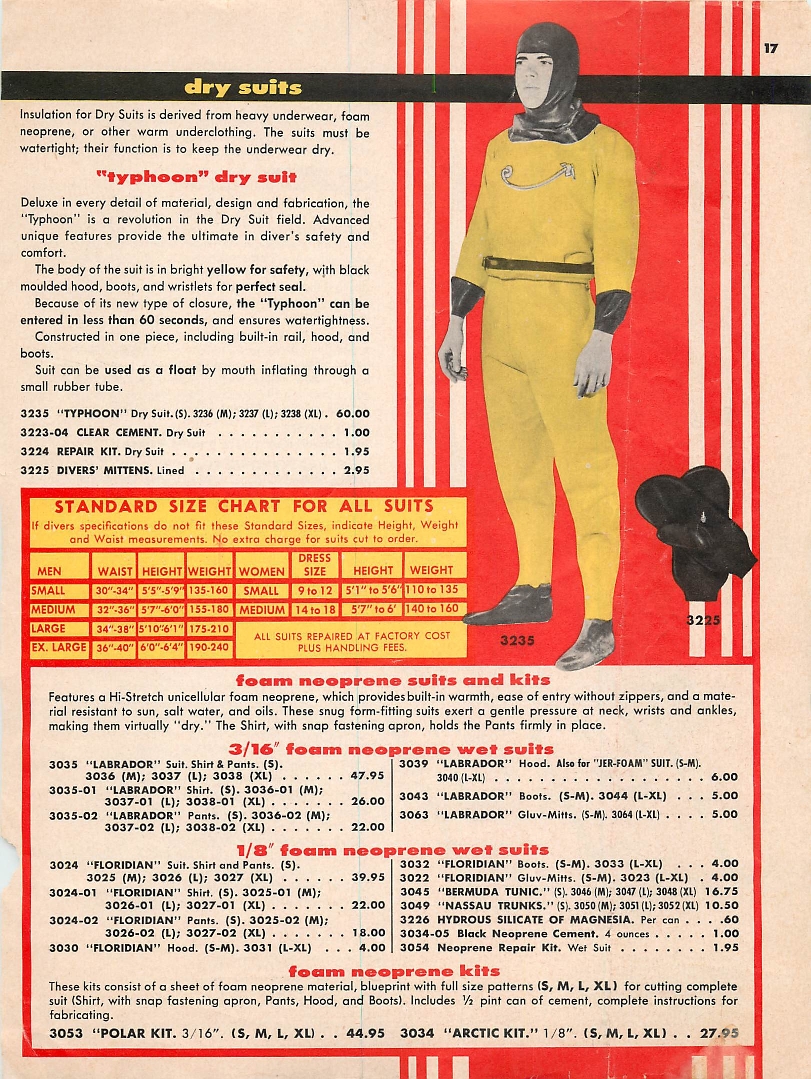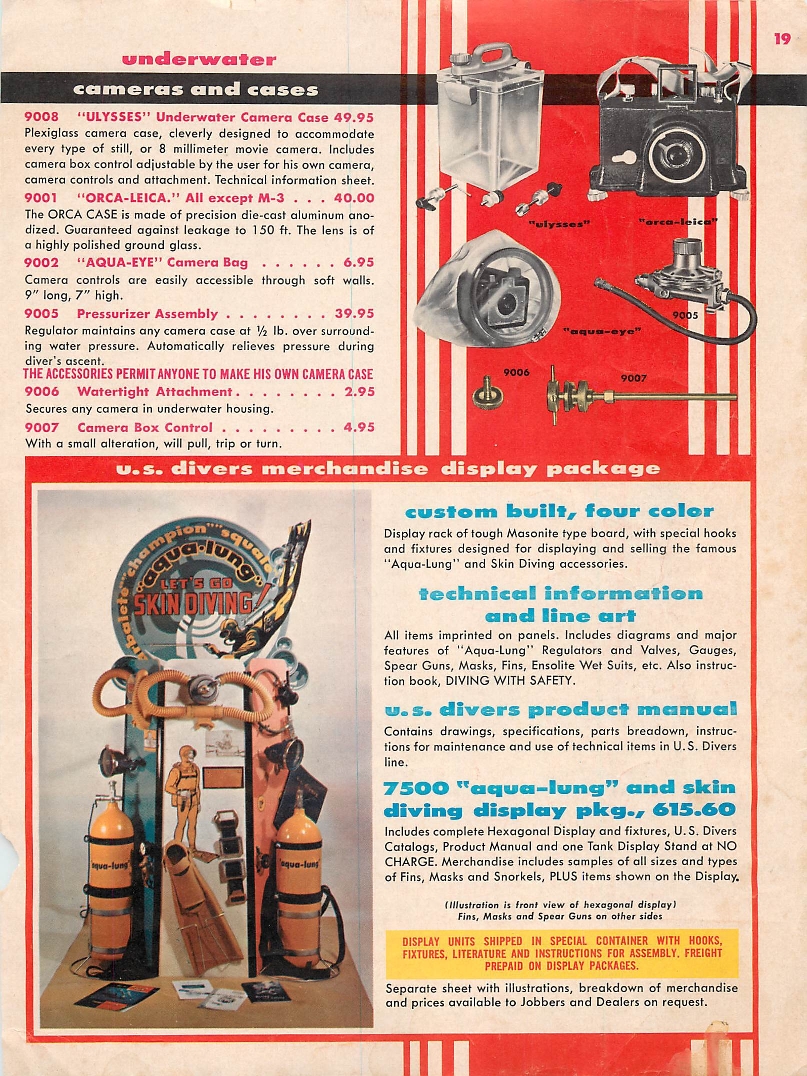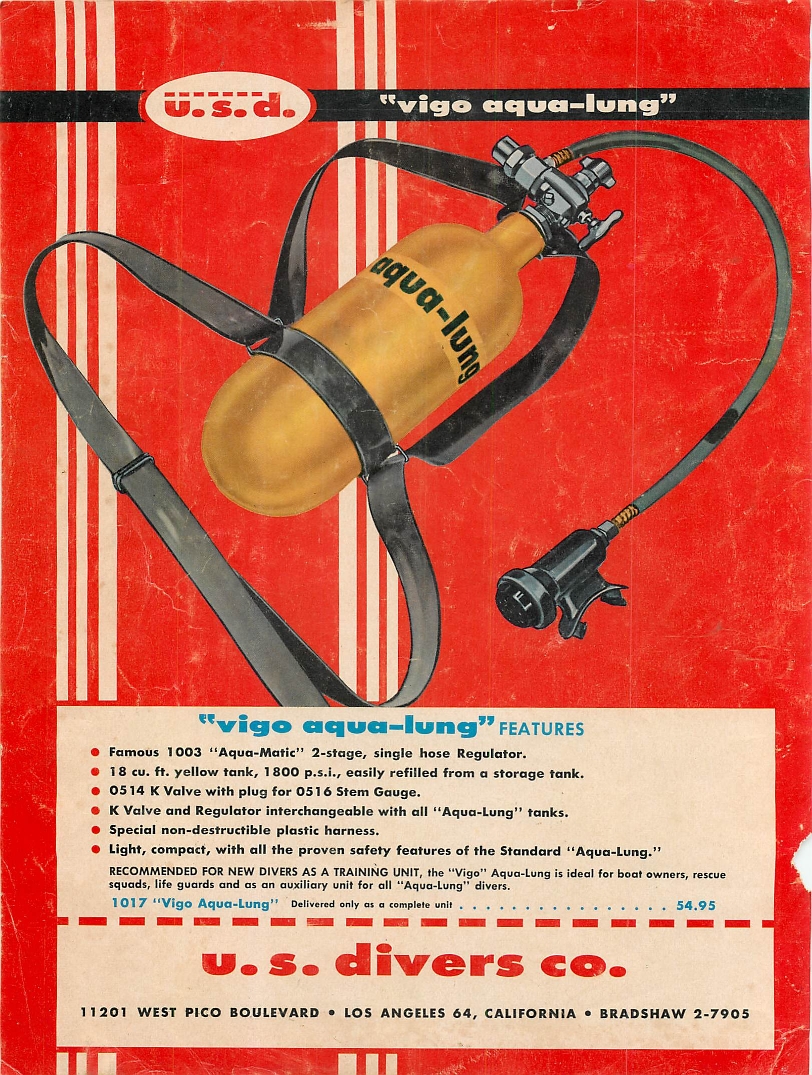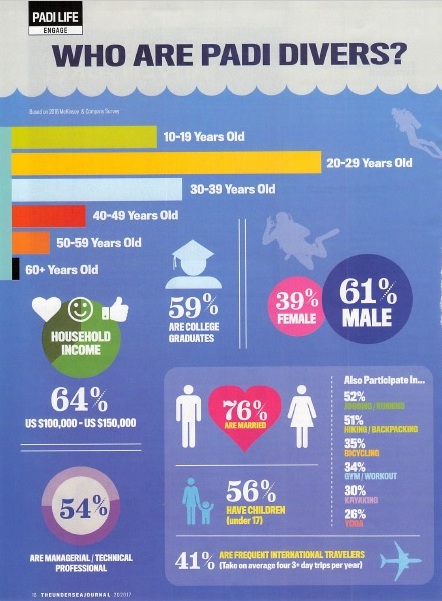
INTRODUCTION
Copyright Information about DSUSDIVE's (Deep-Six Underwater Systems, Inc.) Webpage (http://www.deep-six.com), and this Scuba text, DIVING WITH DEEP-SIX: Copyright 1996-2018 by George D. Campbell, III; President. All Rights Reserved. This file may be posted on Electronic Bulletin Boards for download, but may not be modified, printed for distribution, or used for any commercial purpose without the author's explicit written permission.
Click HERE to Send E-mail to Deep-Six
The Scuba course you are about to take will have you diving in the pool within hours of starting. Experiencing breathing underwater, being able to freely move about without having to worry about coming up for air is a thrill of a lifetime.

Skin diving and scuba diving are different. Going in the water with just a mask, snorkel, and fins is called, "skin diving" or "snorkeling." Using an underwater breathing device that is placed on your back is called, "scuba diving." In fact, "scuba" means, "Self-Contained, Underwater Breathing Apparatus." It is self-contained because there is nothing connecting you to the surface of the water.
There are 6 major components of your scuba course:
1. How to control your buoyancy. This is the number 1 thing to learn. That is what makes a safe diver that really enjoys the sport!
2. Arterial Gas Embolism (AGE) and how to avoid it.
3. Decompression Sickness (DCS) and how to dive safely so you do not encounter it.
4. Avoiding other pressure-related injuries.
5. Staying calm (avoiding panic) and enjoying the beautiful underwater world.
6. Learning how to use life-support equipment.
At Deep-Six we teach you how to dive in the tropics as well as in the northeast. Diving in each is very different. Being trained in the tropics does not really make you a safe diver in the northeast. Here we need full wet suits, a lot of weight to sink those suits, hoods, gloves, and expect to see only a short distance underwater. Being trained in the northeast will make you a much more competent diver. You will receive 2 non-expiring certifications: NAUI Scuba Diver, from the National Association of Underwater Instructors, and PADI Open Water Scuba Diver, from the Professional Association of Diving Instructors. Your instructor is NAUI 3703 and PADI 4443. The cost for those certifications is included in the course fee.
The course is broken down into 3 major categories:
1. The classroom which consists of passing knowledge from the instructor to you so you will know what diving and the equipment is all about;
2. The diving sessions in the pool so you will learn how to handle the equipment and yourself underwater; and
3. The open-water dives. There are 4 of them and they are done on 2 different days. Be sure to bring your calendar to the last classroom session of the course so these may be scheduled to meet your available time.
IF YOU ARE BETWEEN 10 AND 15 YEARS OLD, READ THE FOLLOWING PARAGRAPH:
Between 10 and 12: You will be certified as a Junior Open Water Scuba Diver. Because of your age you will have a few restrictions: You must always dive with an instructor or a certified parent, and you are limited to a depth of 40 feet.
Between 12 and 15: You will be certified as a Junior Open Water Diver. When you reach the age of 15 your certification can be converted to the Open-Water Scuba Diver. The only restriction you have as a Junior OW Diver is that you must dive only with certified divers (which we all do anyway), and your parent has to sign a statement saying you will abide by this.
There are many forms you will have to fill out before and during taking any scuba course. These forms insure that you have nothing medically wrong with you that might develop into a major problem underwater, understand the nature of the sport, and will not hold someone else responsible for not following simple procedures and suggestions. The forms do not prevent you from exercising your rights if an instructor is negligent.
Also, your PADI card requires a photograph that will be taken at this time. You certification information will be forwarded to NAUI & PADI when you complete the course.
During the course the Diver’s Alert Network (DAN) will insure you against decompression illness (AGE and DCS) for no charge. The insurance is valid through the last open-water dive. They do this so they will be able to send you information about renewal after you are certified. A sheet will be passed around during the first day so you can take advantage of this valuable service.
Before you return to the Index Page, if you would like to see what the pool scuba experience involves, CLICK HERE ----> TO POOL SKILLS.
A word about scuba diving as far as it being a safe sport: It is! The following chart was compiled by the Diver's Alert Network (DAN). The statistics speak for themselves:

The following graph indicates that scuba diving has become safer as time goes by. Better instruction, better equipment, and a better understanding of how to keep the sport safe and fun are part of the reasons for the trend:
Note: Many of the 147 fatalities in 1976 were involved in scuba diving activities they were not certified for such as cave diving.

One last point about diving: As you will note from the graph above, an over-weight diver has a greater chance of becoming a statistic. Your BMI (Basal Metabolic Index) may be calculated with either of the two equations:
Your mass (weight) in kg divided by your height (in meters) squared OR Mass (lbs) times 703 divided by your height in inches squared
Click HERE to Send E-mail to Deep-Six
The following are what scuba courses looked like in the late 1950's and 1960's:
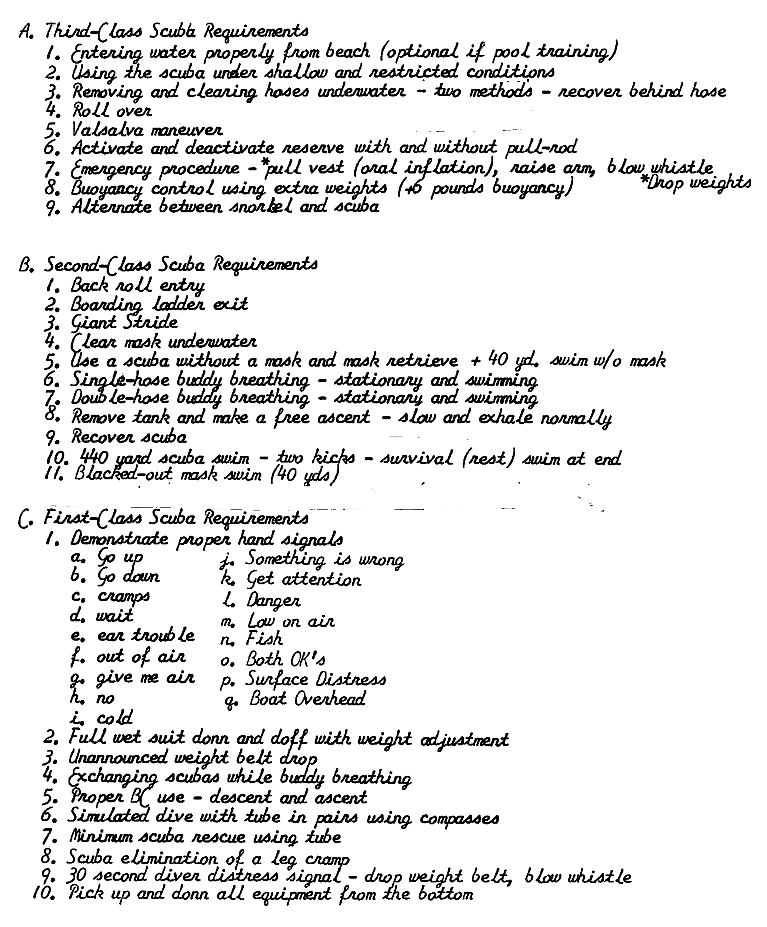
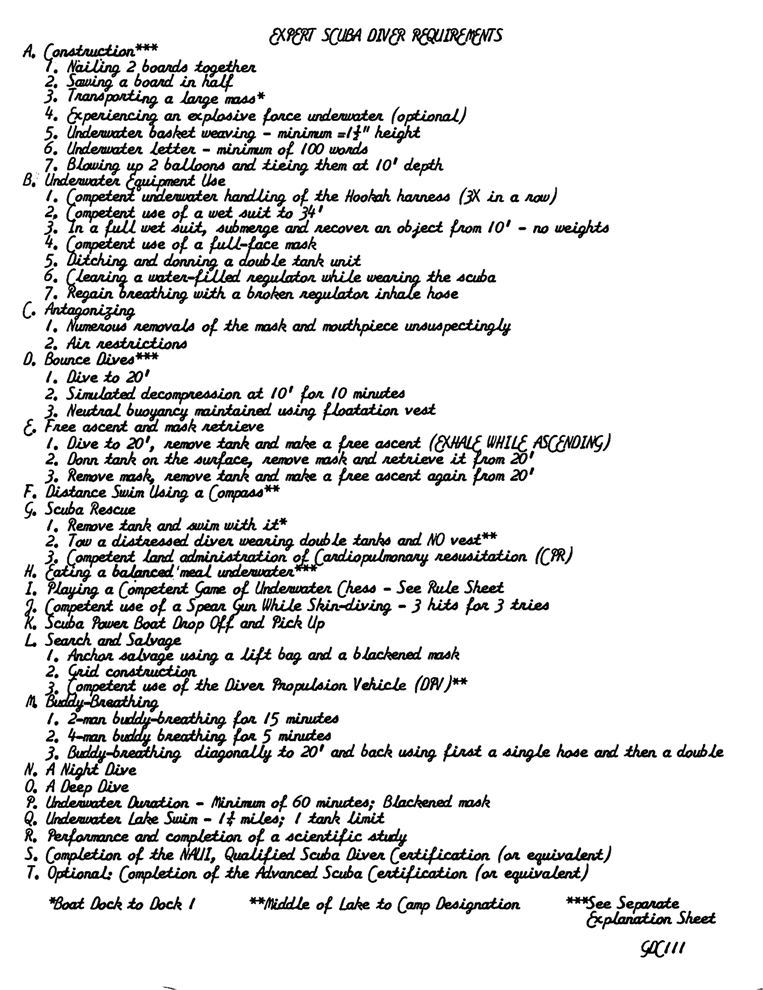
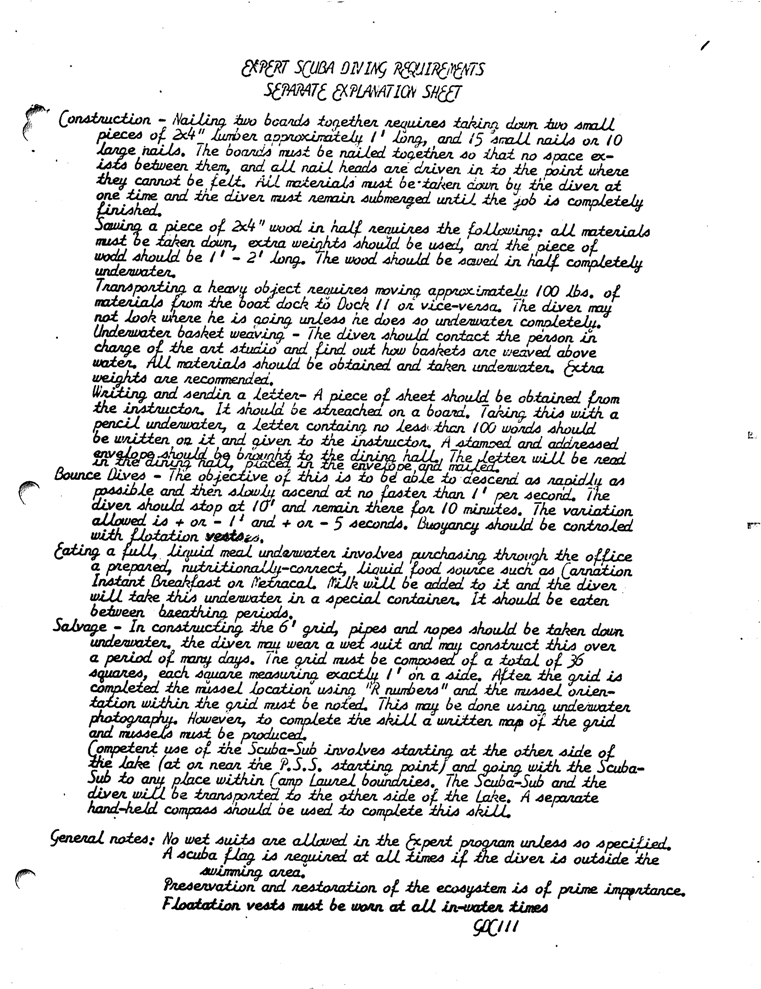


Click HERE to Send E-mail to Deep-Six
The following are what the US Divers 1957 catalog had to offer divers:

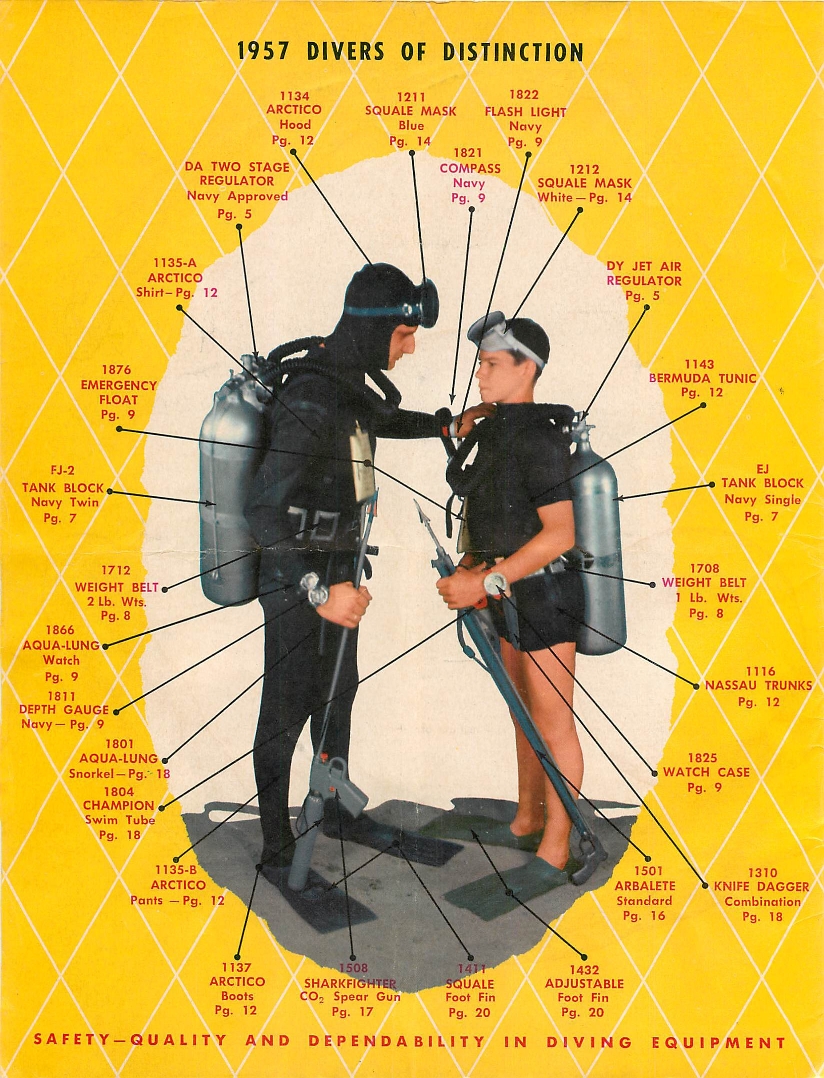
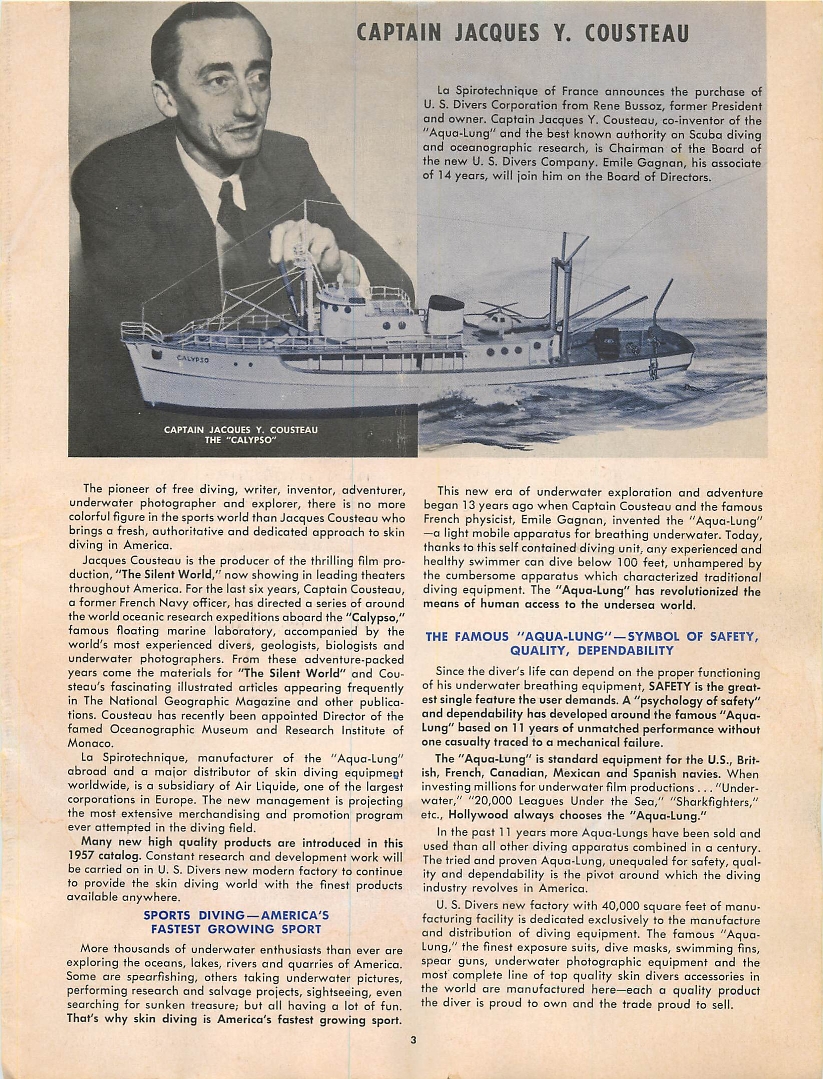
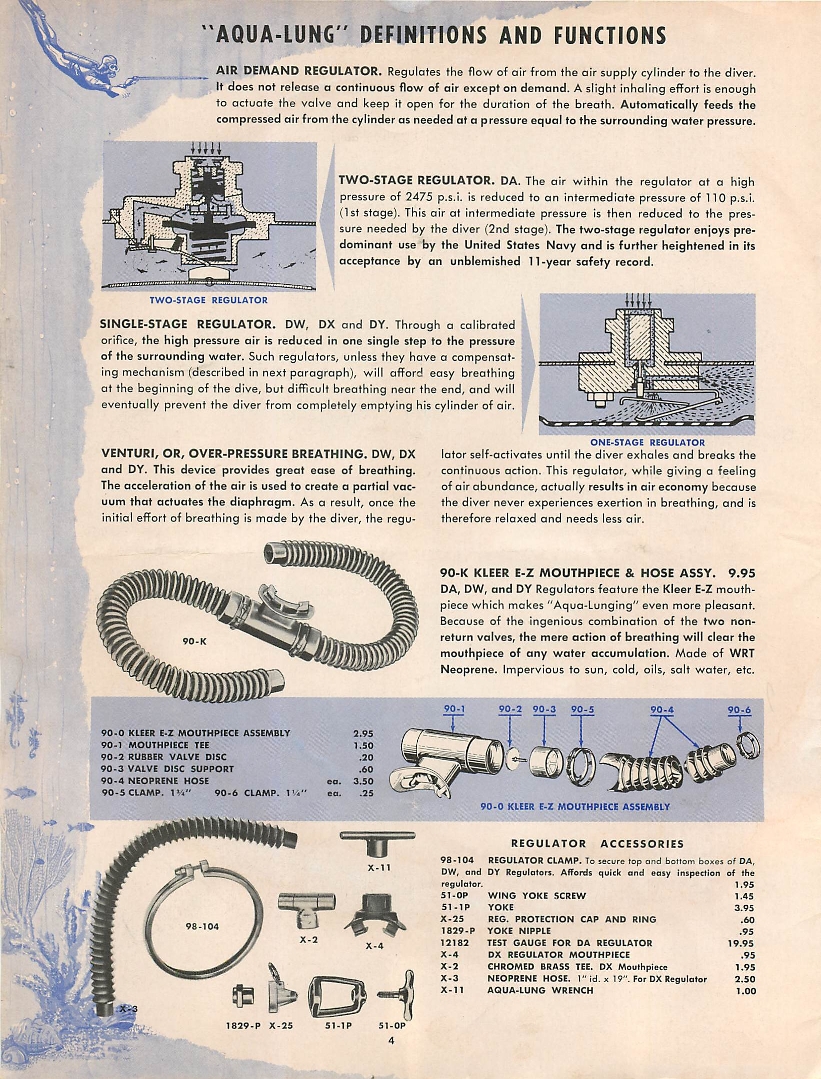
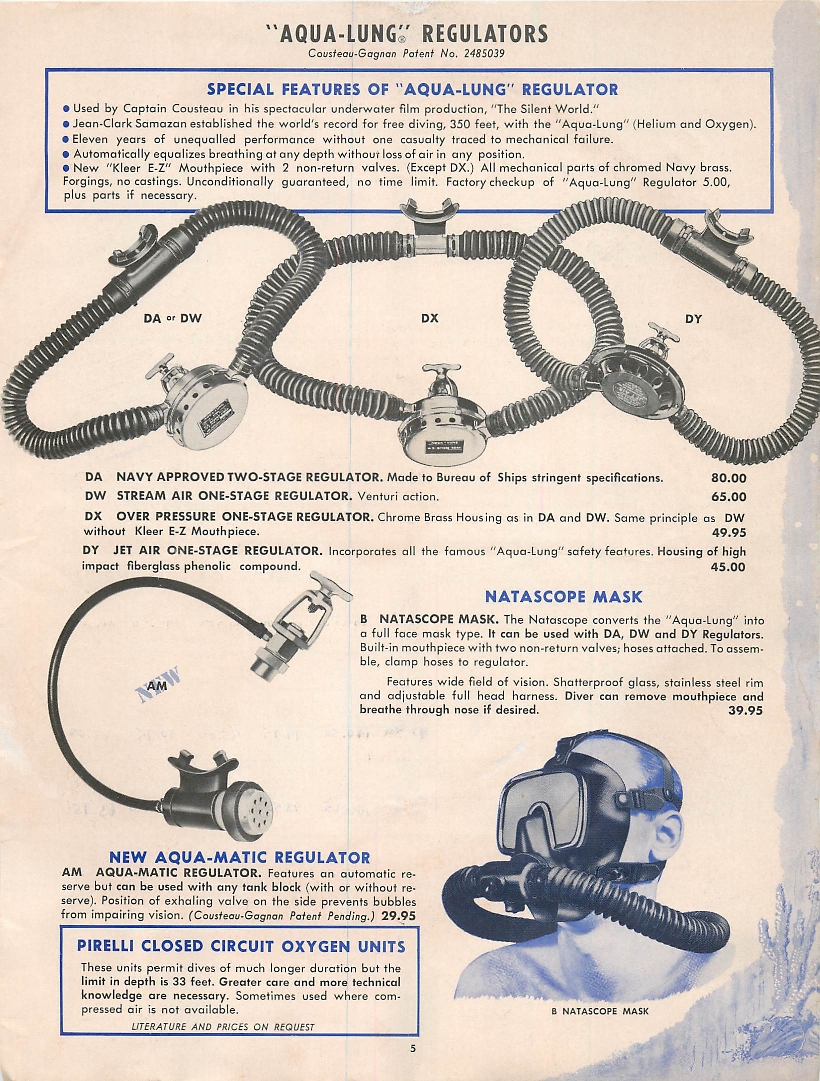
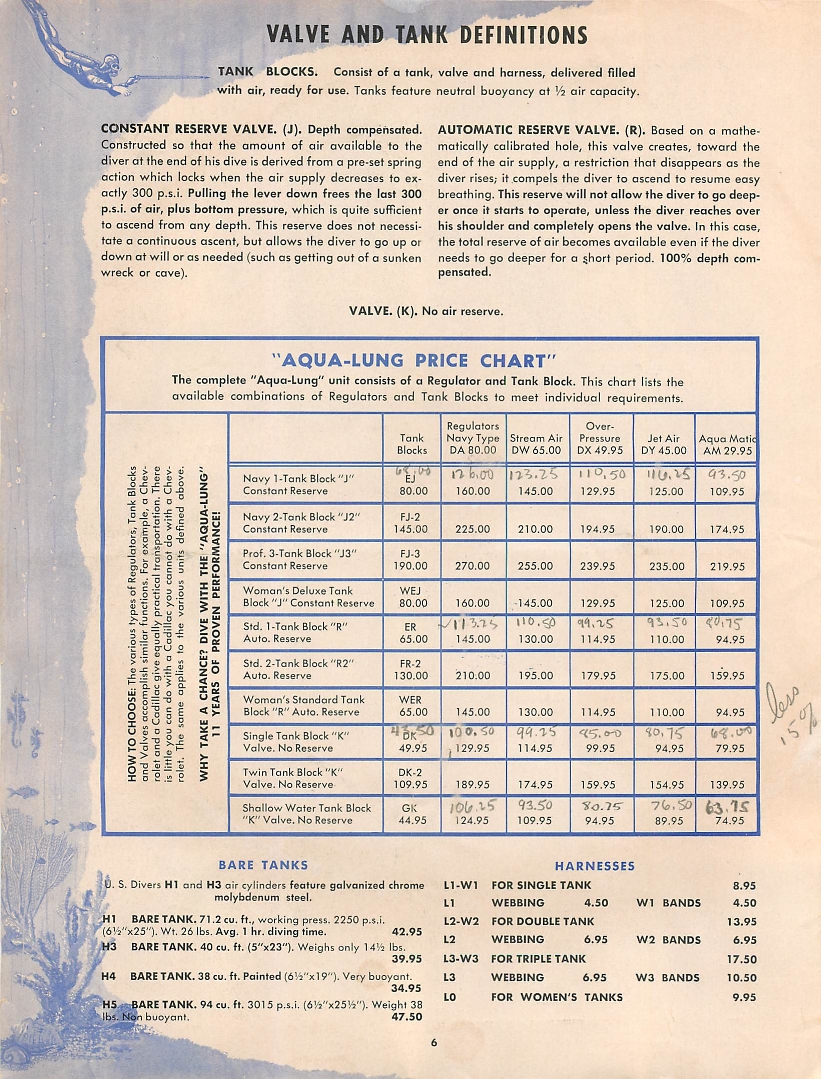


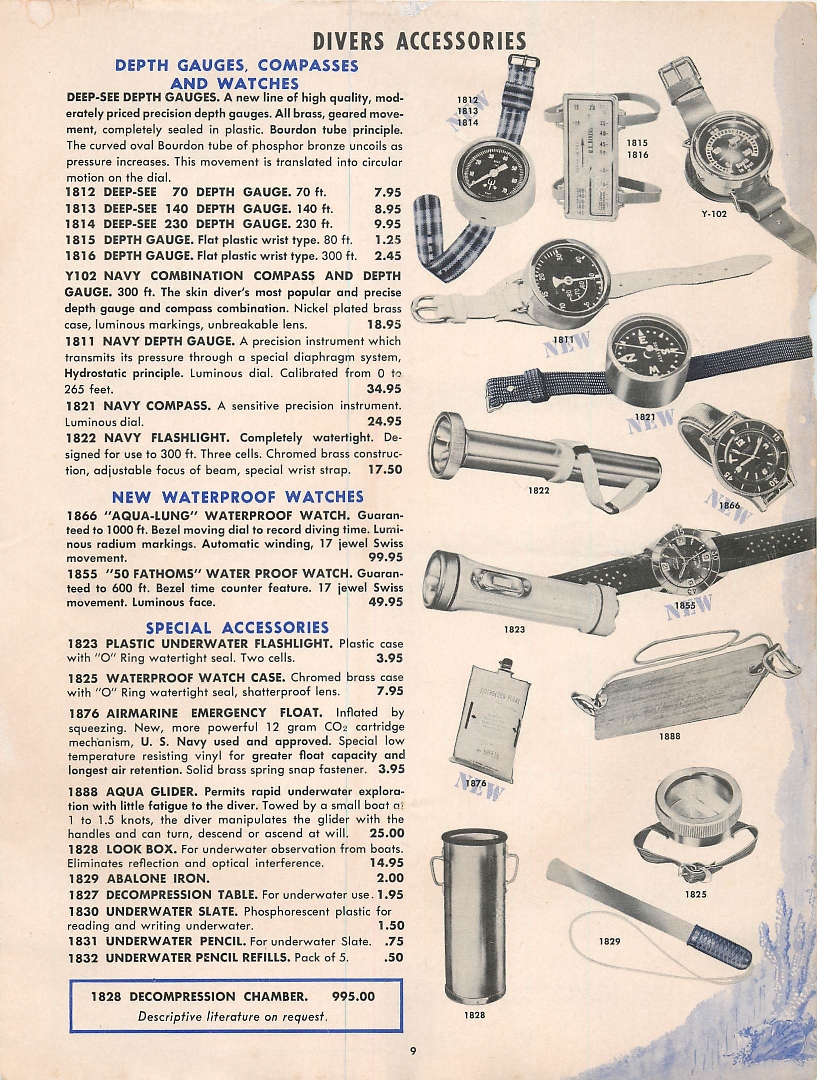
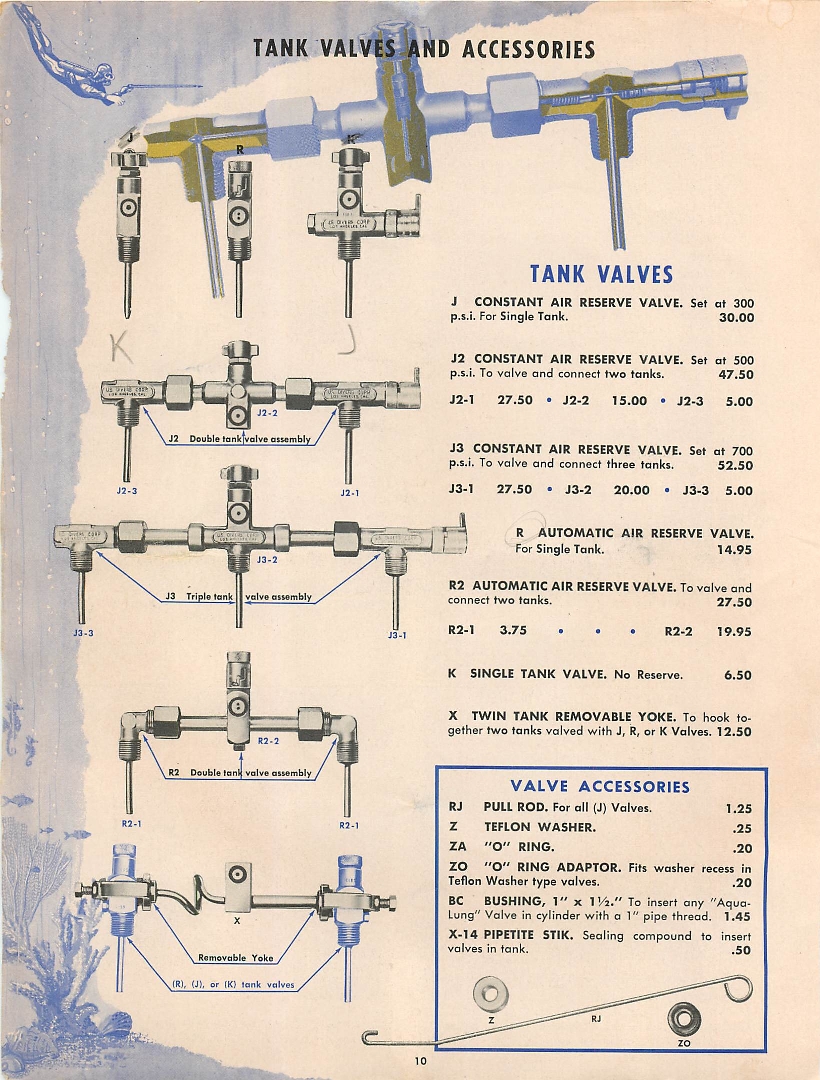

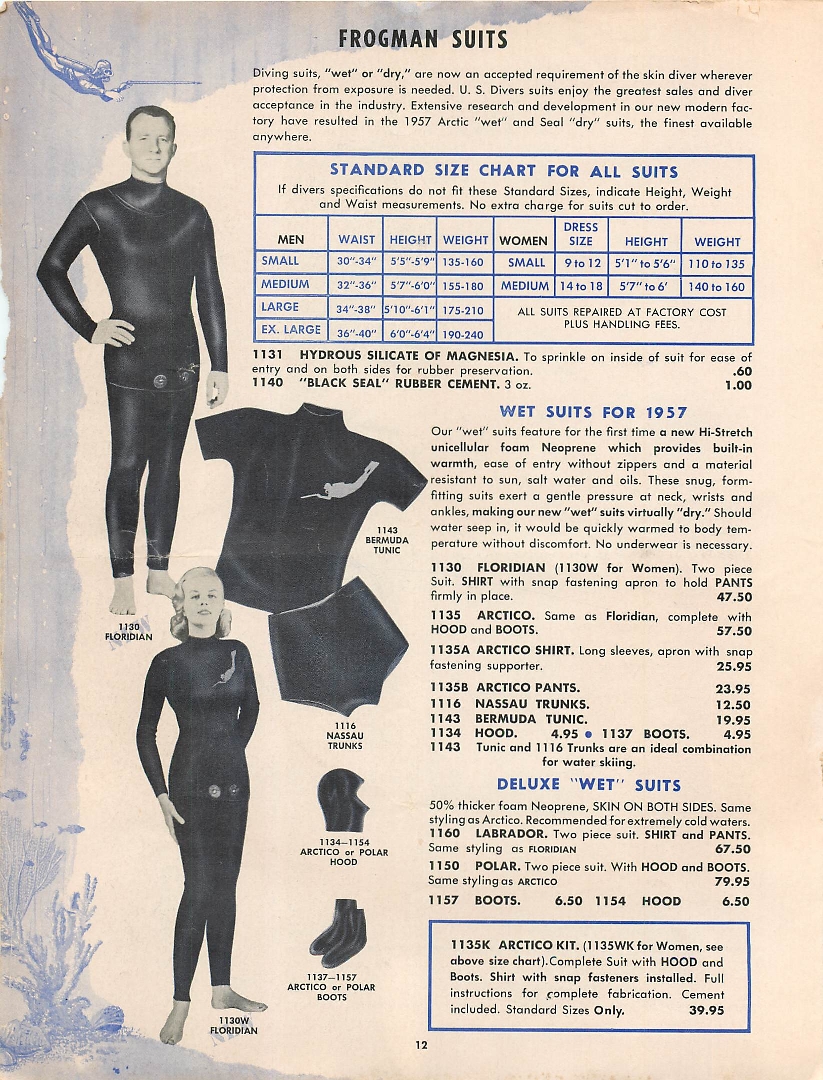
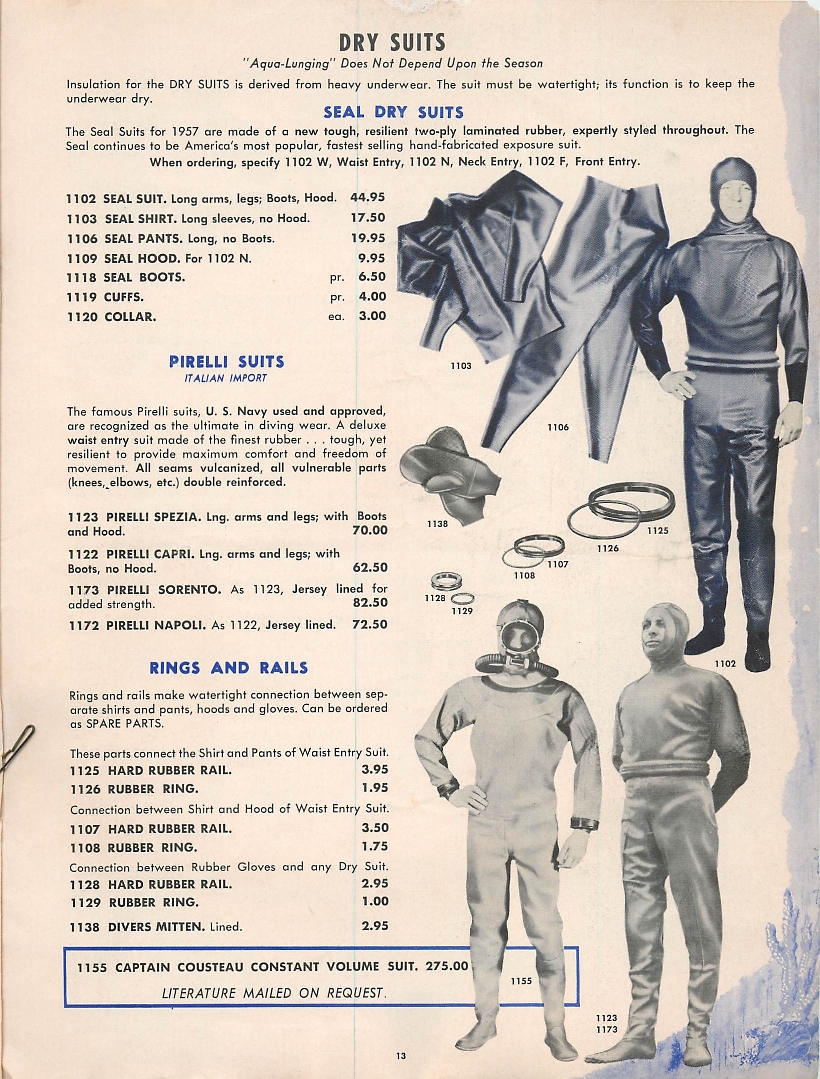
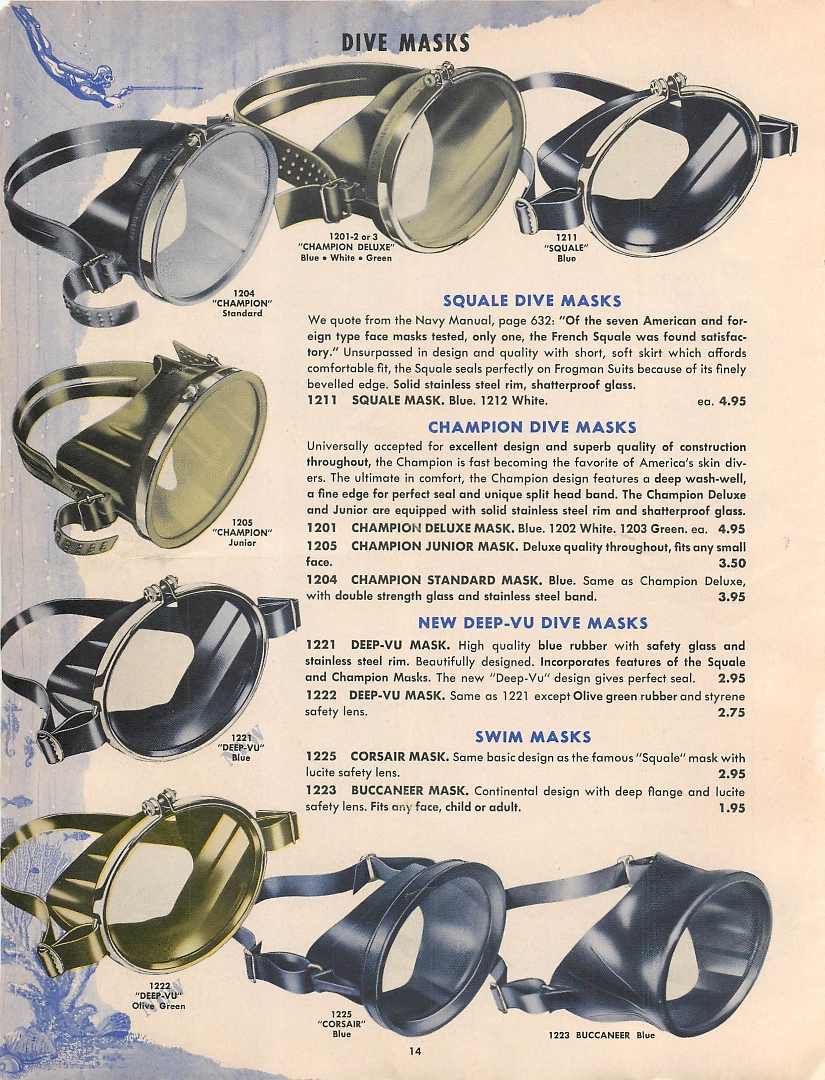
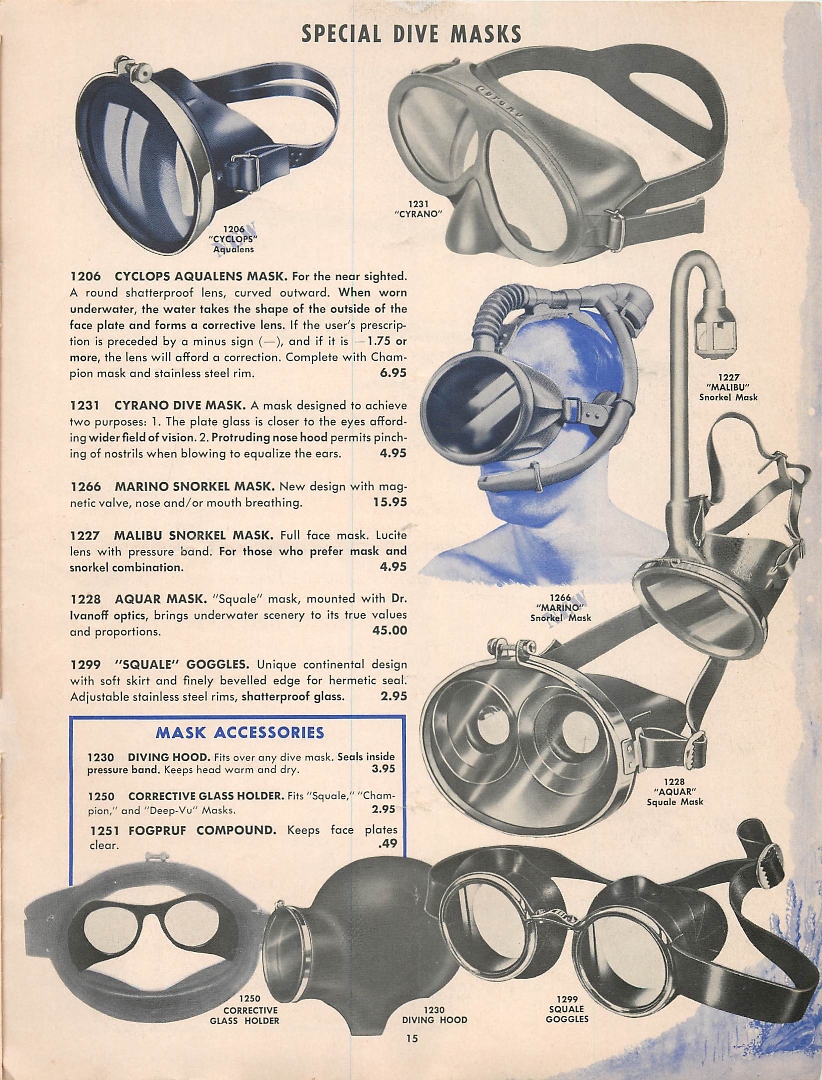

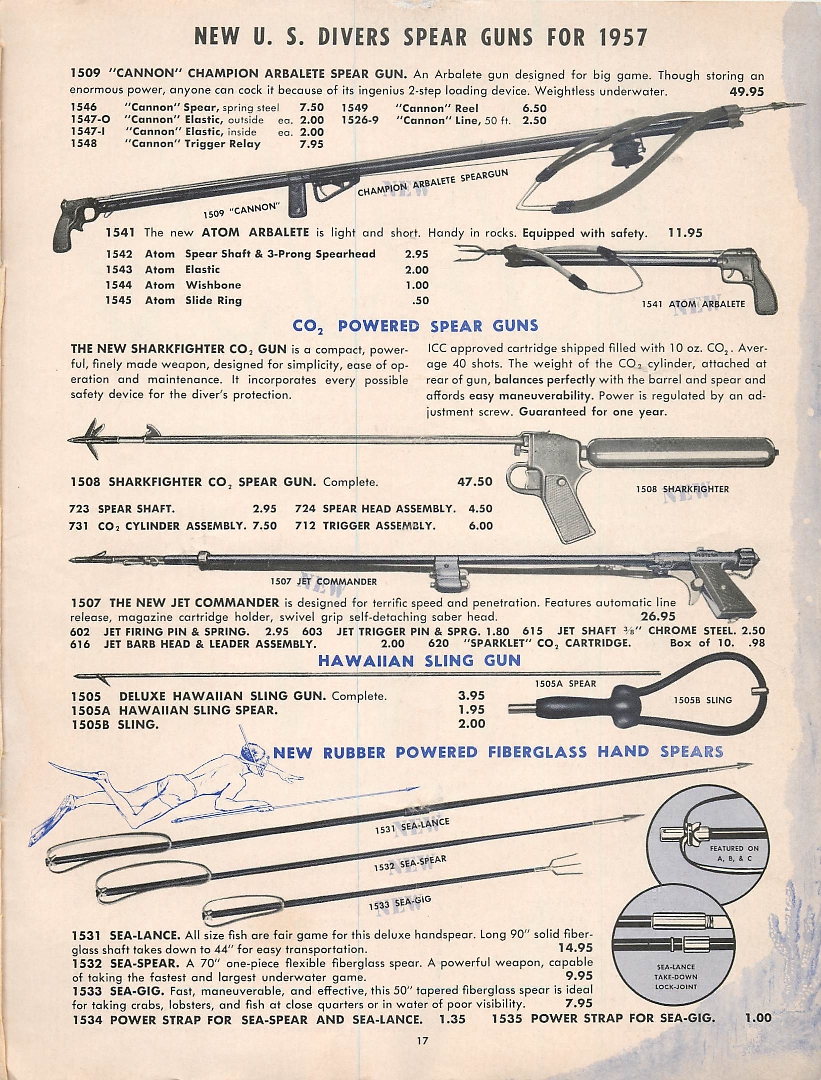

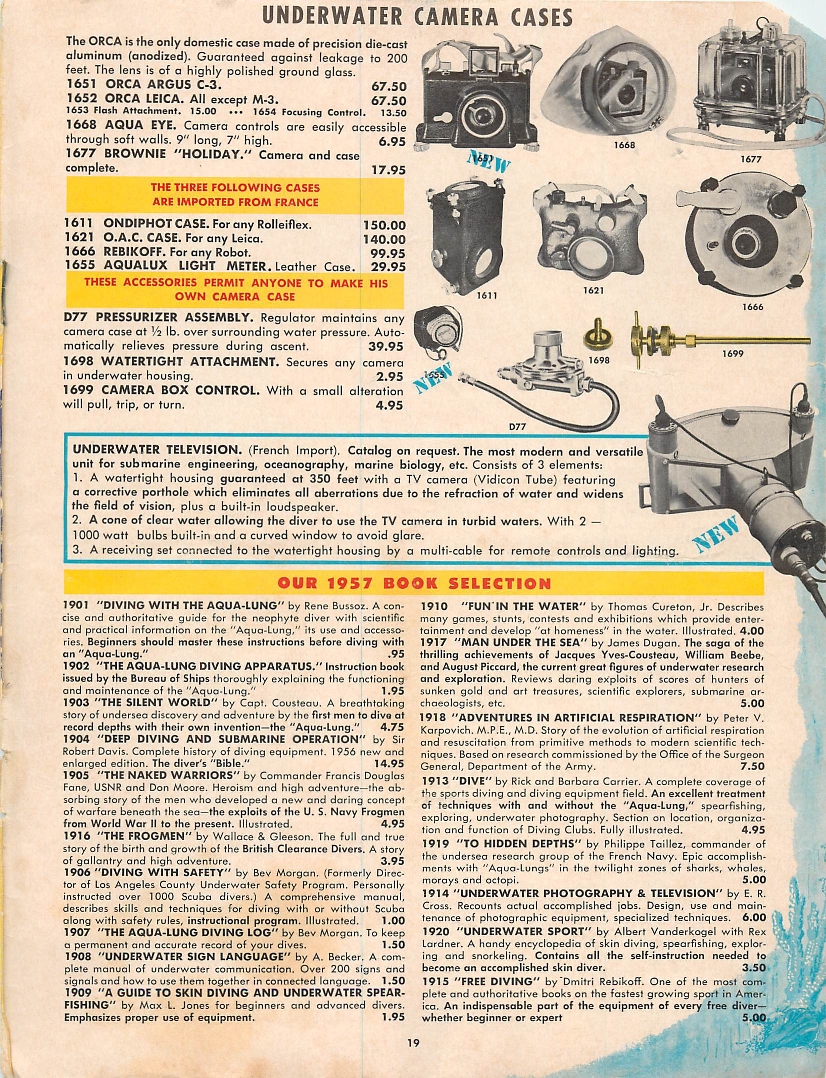

Click HERE to Send E-mail to Deep-Six
The following are what the US Divers 1959 catalog had to offer divers:

